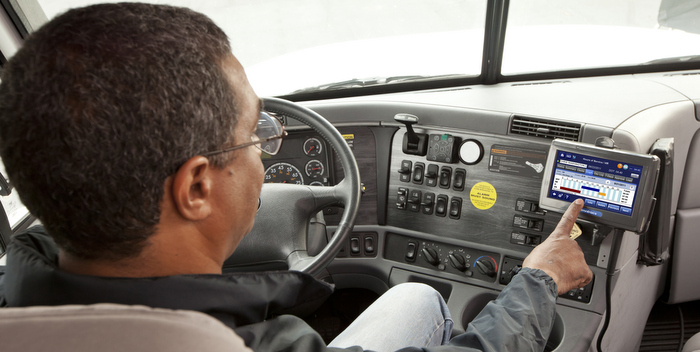Storms can strike with little warning, putting our homes and the cherished memories within them at risk. When severe weather hits, wind, rain, and debris can cause extensive damage, with treasured family photos and videos often among the first casualties. Planning ahead is essential for anyone looking to safeguard their personal archives from storm-related damage.
Here, we’ll discuss practical steps to keep your memories safe, from storm-proof storage to digital backups, ensuring your family’s legacy remains intact no matter what the weather brings.
Storm Risks to Personal Archives
When a storm approaches, high winds, torrential rains, and flying debris can wreak havoc on even the most well-protected homes. Unfortunately, photos, videotapes, and other memorabilia stored in attics, basements, or exposed areas are especially vulnerable.
Flooding can cause irreparable water damage to these items, while wind can blow loose debris into spaces where precious mementos are stored. Even humidity can degrade photos and videos over time, leaving many families devastated by the loss of irreplaceable memories.
Preserving family photos and videos starts with understanding the risks. Once these threats are clear, it becomes easier to plan and implement effective storage and digitization strategies.
Storm-Proof Storage Options
Proper storage is one of the most effective ways to protect your memories from storm damage. Here are some options to consider:
- Waterproof Containers: Place photos, albums, and videos in waterproof containers to prevent water damage. Look for heavy-duty plastic bins with airtight seals, or even specialized waterproof containers designed for important documents and fragile items.
- Wind-Resistant Storage Locations: If possible, keep irreplaceable items in wind-resistant areas of the home, like interior closets or storm shelters. Avoid placing them in basements or attics, as these areas are prone to flooding or roof damage during storms.
- Shelving and Elevation: If waterproof containers aren’t available, simply elevating items off the floor can provide some protection in case of flooding. Placing storage bins on sturdy, high shelves ensures your items stay safe from rising water levels.
Using these storage methods helps protect physical copies of photos and videos, reducing the chance of damage from storm-related elements. But while these options are helpful, creating backup copies provides an extra layer of protection for items that are truly irreplaceable.
Preventative Measures Before a Storm
With storms becoming increasingly unpredictable, it’s wise to take preventative steps to protect important memories. Here are some practical ways to ensure that precious items are ready for any sudden weather changes:
- Create Backup Copies: Make duplicates of valuable photos and videos. Keep one set in a secure location, like a family member’s home in a different area, and another in a safe place within your own home.
- Update Backups Regularly: Every few years, revisit your family photos and videos to ensure that all important memories are stored safely and duplicated if needed.
- Develop an Emergency Plan: Before storm season, designate an emergency kit for sentimental items. Pack it with essentials like copies of important documents, a few cherished photos, and any other items that you’d want to protect if you needed to evacuate quickly.
By creating physical and digital copies, you give yourself a higher chance of retaining precious memories, even in the event of a severe storm.
Digitization for Long-Term Safety
Digitizing family photos and videos is one of the most effective ways to keep them safe from storm damage. When items are digitized, they’re stored electronically, meaning that even if the physical copies are lost, the memories are preserved. Here’s how to get started with digitizing your family archive:
Converting physical items into digital formats
Digitizing family photos and videos is one of the most effective ways to safeguard them from storm damage. By converting physical items into digital formats, you create an electronic archive that ensures even if the original copies are lost or destroyed, the memories remain preserved. Here’s how to get started with digitizing your family archive:
Using a flatbed scanner for photos or a video
If you prefer to keep things in-house, various tools and devices make home digitization straightforward and accessible. For example, using a flatbed scanner for photos or a video capture device for VHS tapes allows you to transfer your cherished memories into digital formats.
Once digitized, it’s crucial to back up your files in multiple locations to maximize their safety. Utilize an external hard drive for physical storage, and couple it with a reliable cloud-based storage service to ensure your memories are accessible from anywhere, regardless of what happens to your local storage device
By using Expert Services
Alternatively, if you’d rather leave the digitization process to professionals, several reputable companies like Capture.com, Legacybox, and Southtree can digitize your memories. These experts can handle everything from photos and VHS tapes to other forms of media, ensuring that your memories are transferred into secure digital formats with the utmost care.
They utilize advanced equipment and techniques to preserve every detail of your original media, providing you with a reliable archive for the future. In addition to standard digitization, many of these companies offer specialized services, such as SD card to DVD transfer, allowing you to convert your digital files into physical formats for easy access and sharing.
Digitization allows you to preserve not only the physical copies but also the emotional significance of your family’s history, making it easier to share memories with loved ones and pass them down through generations.
Conclusion
With the rise in extreme weather, protecting family photos and videos from storm damage has never been more important. Taking the time to secure your items in waterproof containers, storing them in safe locations, and creating backup copies are all effective ways to shield your family’s precious memories from the unpredictability of storms. And by digitizing important items, you add an additional layer of protection, ensuring that even if physical copies are lost, the memories are saved.
In the face of a storm, it’s natural to prioritize the safety of family members. However, with the right preparation, you can also protect the memories that tell your family’s story. Whether it’s through professional digitization services like Southtree digitizing or simple home solutions such as SD card to DVD transfer services, you have the tools to preserve your family’s legacy, come rain or shine.











